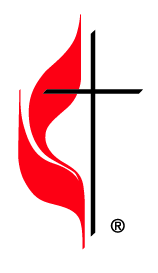The Work Of The People

By Carl Thomas Stroud Gladstone
Have you ever heard someone say the word “liturgical” and then you immediately fell asleep, bored out of your gourd?
But wait! That word originally meant something pretty cool: the liturgy was a particular set of practices built for and around the offerings and gifts of a group of people. It meant something like “the work of the people” and was more about mobilizing communities in faith-filled living. It wasn’t just an order of worship printed in a bulletin.
Not bad, right?
At the Conspiritor Collective (http://conspiritor.co) we’ve been trying to develop some practices that gather the artistic work of the people to inform the worship and discipleship of our youth groups, campus ministries, and churches. Let us tell you how this kind of liturgical seasonal planning happens through projects like our recent #watchnighthymns.
Conspiritor artists are youth and young adults creating music, poetry, visual/video arts and more infused with the artist’s honest reflections on their Christian faith. Our goal is to use certain seasons of the year to invite specific artistic reflections that can inspire these artists in their work. Then we share that work to benefit the worshipful life of local churches and ministries.
Here’s the process we follow:
The Prompt
We start each of our projects by putting together a scriptural prompt for young artists to consider. This usually has some contextual introduction to the season at hand. Recently we introduced the watch-night tradition this way:
“During Advent 2017 we are inviting Conspiritor Collective artists to look forward to and submit pieces reflecting on the “Watch-Night” hymns of Charles Wesley. Randy L. Maddox describes the watchnight tradition this way:”
‘These were nights when Methodists gathered to devote themselves to prayer, somber reflection, and mutual encouragement to the holy life…Ultimately, watchnight service became a New Year’s Eve tradition which culminated in the typical joyous service early on New Year’s Day.’*
“Below are eleven hymn texts by Charles Wesley that we are inviting young artists to retune, rewrite or reflect upon to help the church reclaim some of this heritage of communal devotion and rededication.”
This introduction leads right into some scriptural passages relevant to the season. And these in turn lead us to 3-5 particular questions we want artists to consider.
Too often the development of any liturgical moment happens mostly within the head of one clergy person. Our goal is to invite the work of the people from the very start, and the prompt is our mechanism to do that. Once completed, we share the prompt widely via social media, making sure to tag folks we think might have some artistic insight into this project. (See the full #watchnighthymns prompt at http://conspiritor.co/watch-night-hymns)
The Ingathering
The next step in our process is to gather the artistic reflections of Conspiritor artists. While anyone can see the prompt, and submit their work through our website, we have the most success in generating responses with personal invitations. Check out a great collection of submitted pieces about the church’s recent hurricane relief work at http://conspiritor.co/hurricanerelief
Our collective also realizes that part of inviting the work of the people is to offer them some constructive tools for perfecting their work. To do this we have developed a small group of experienced artists ready to give prayerful feedback to those submitting their work. This way, young people can be confident that the work they submit will have been enhanced by the suggestions of their community, another work of people!
Soon, we will have gathered some pieces from brave young artists, and it is time to share them with the world.
The Reveal
In your local church, a weekly worship service might be the most obvious place to feature the liturgical and artistic work of your people. For the Conspiritor Collective we start by recording an interview with the artists to hear more about their piece, their influences as an artist and the faith community that has formed them. Then we feature that interview on our monthly podcast.
Wherever you share this offering of the people, be sure to invite further responses from the people once they experience it! Ask questions like, “How did this song inspire you to act out this biblical story this week?” Or invite actions like, “Print out today’s image, hang it up in your house and every time you pass it this month, take a minute to pray for the situation it depicts.”
Now Get To Work
We hope this look into our process at the Conspiritor Collective can inform your own seasonal/liturgical planning. Young people can offer some amazing and creative insight into our missional life, if given the chance. So, help them do the work of the people by building your worship/discipleship planning around their inspired responses to our biblical story.
This kind of creative, spirit-filled planning happens best when done with plenty of time. In order to effectively engage and grow disciples through creative expressions, be organized enough to begin your planning between 3 and 12 months ahead of time.
The example we shared in this post is the process we at Conspiritor Collective use all the time. The Advent/Watch-Night idea that came out in December of 2017 was actually planned back in the summer of 2017. So, if anything here gets you excited, start thinking about Lent or even Advent 2018, and how the gifts of your young people might support discipleship and worship!
We’ll repeat this same process next year (2018) when Advent and Watch-Night roll around, so set a reminder, then go ahead and send in the work of your young artists to us at http://conspiritor.co/#submit !
* ”Watchnight Hymns (1750).” Duke Center for Studies in the Wesleyan Tradition, Randy L Maddox Editor, 2008.


